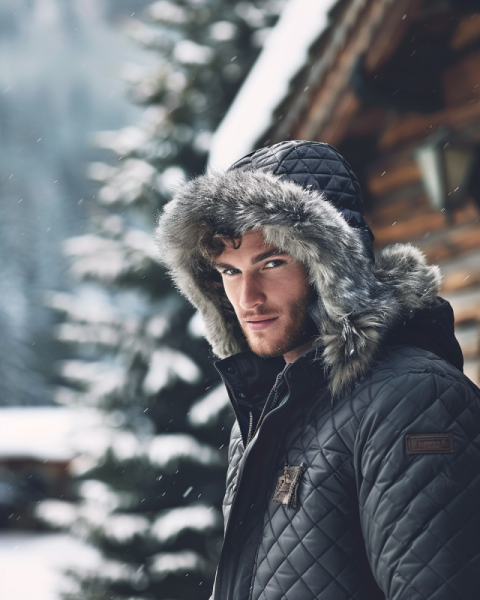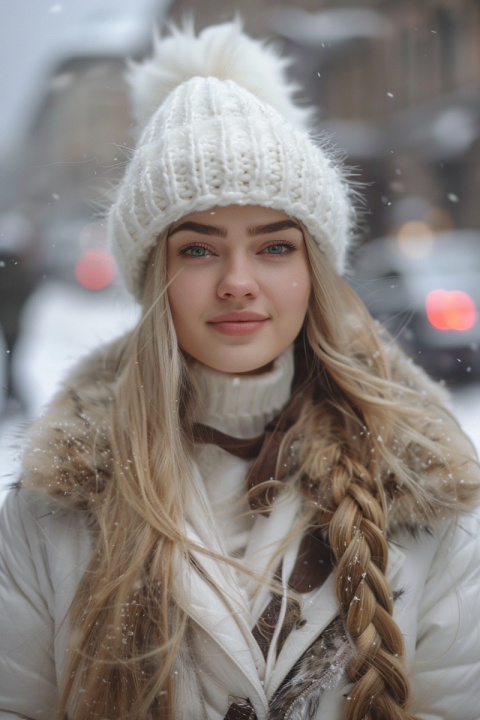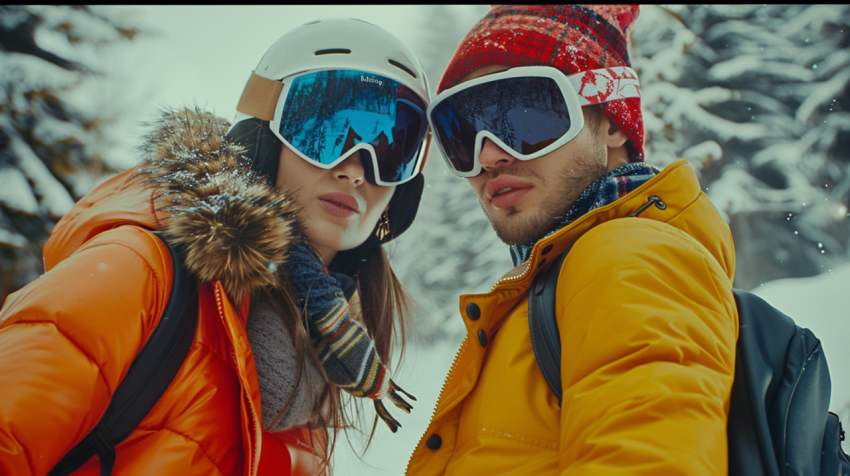











The Art of Portraiture: Capturing Likeness, Personality, and Essence
A portrait is a representation of a person, typically focusing on the face and its expression, with the intent to display the likeness, personality, and even the mood of the subject. Portraiture has been a significant art form for centuries, evolving across various mediums, styles, and cultural contexts. From painted portraits of royalty to candid photographic snapshots, portraits offer a window into the human condition, capturing not only physical appearance but also something of the inner life and essence of the individual. This exploration delves into the art of portraiture, examining its history, diverse styles, techniques, the challenges of capturing a meaningful likeness, and the enduring power of the portrait in both art and photography.
1. History of Portraiture:
- Ancient Origins: Portraiture dates back to ancient civilizations, with examples found in Egyptian, Greek, and Roman art. These early portraits often depicted rulers, deities, or important figures and served to commemorate, idealize, or immortalize the subject.
- Renaissance: The Renaissance saw a renewed interest in realism and humanism, leading to a flourishing of portrait painting. Artists like Leonardo da Vinci, Raphael, and Titian created iconic portraits that captured both physical likeness and psychological depth.
- 17th-19th Centuries: Portraiture continued to be a dominant art form, with various styles emerging, including Baroque, Rococo, Neoclassicism, and Romanticism. Portrait painters often served the aristocracy and wealthy patrons, creating formal and often idealized portraits.
- Photography: The invention of photography in the 19th century revolutionized portraiture, making it more accessible and affordable. Photography also introduced new possibilities for realism and capturing candid moments.
- 20th Century and Beyond: Modern and contemporary art movements brought new approaches to portraiture, with artists experimenting with abstraction, expressionism, and conceptual approaches. Photography also continued to evolve, with diverse styles ranging from formal studio portraits to photojournalistic and street photography.
2. Styles of Portraiture:
- Formal Portraits: Traditional portraits, often posed and carefully composed, that emphasize the subject's status, character, or accomplishments.
- Candid Portraits: Unposed or spontaneous portraits that capture a more natural and uninhibited view of the subject.
- Environmental Portraits: Portraits that show the subject in their natural surroundings, providing context and revealing more about their life and personality.
- Self-Portraits: Artists' representations of themselves, offering insights into their self-perception and artistic vision.
- Group Portraits: Portraits depicting multiple individuals, often families, colleagues, or members of a group.
- Abstract Portraits: Portraits that depart from realism, using non-representational forms, colors, and techniques to convey the essence of the subject.
- Conceptual Portraits: Portraits that focus on conveying an idea, theme, or message rather than a literal likeness.
3. Techniques and Elements of Portraiture:
- Likeness: Capturing a recognizable physical resemblance to the subject.
- Composition: The arrangement of elements within the portrait, including the subject's pose, background, and other objects.
- Lighting: The use of light and shadow to create mood, emphasize features, and add depth to the portrait.
- Pose: The subject's posture and body language, which can convey personality and emotion.
- Expression: The subject's facial expression, which can reveal their inner state.
- Medium: The materials used to create the portrait, such as paint, charcoal, pastels, photography, or digital media.
- Color: The use of color to create mood, symbolism, and visual interest.
- Texture: The surface quality of the portrait, which can be smooth, rough, or textured depending on the medium and technique used.
4. The Art of Capturing Personality:
A successful portrait goes beyond mere physical likeness to capture something of the subject's personality, character, or inner life. This can be achieved through:
- Observation: Carefully observing the subject's features, expressions, and body language.
- Empathy: Connecting with the subject on an emotional level to understand their personality and mood.
- Storytelling: Using composition, lighting, and other elements to create a narrative or suggest a story about the subject.
- Symbolism: Incorporating objects or symbols that represent the subject's interests, values, or experiences.
5. Portrait Photography:
Photography has become a dominant medium for portraiture, offering unique possibilities:
- Realism: Photography can capture a high degree of realism and detail.
- Spontaneity: Photographers can capture candid moments and fleeting expressions.
- Accessibility: Photography has made portraiture more accessible to both artists and subjects.
- Technical Aspects: Photographers use various techniques, such as aperture, shutter speed, ISO, and different lenses, to control the image and achieve specific effects.
- Digital Manipulation: Digital photography allows for post-processing and manipulation of images, offering creative possibilities but also raising ethical considerations.
6. The Power of the Portrait:
Portraits have the power to:
- Commemorate and Remember: Portraits can serve as a record of a person's existence and preserve their memory for future generations.
- Reveal and Conceal: Portraits can reveal aspects of a person's personality and identity but can also be used to construct or manipulate an image.
- Connect and Empathize: Portraits can foster a sense of connection and empathy between the viewer and the subject.
- Document Social History: Portraits can provide valuable insights into the social, cultural, and historical context in which they were created.
- Challenge and Provoke: Portraits can challenge viewers' perceptions, raise questions about identity, and provoke social commentary.
7. Famous Portrait Artists and Photographers:
- Painters: Leonardo da Vinci, Rembrandt van Rijn, John Singer Sargent, Diego Velázquez, Frans Hals, Gustav Klimt, Frida Kahlo, Alice Neel, Chuck Close, Kehinde Wiley, Amy Sherald.
- Photographers: Yousuf Karsh, Richard Avedon, Annie Leibovitz, Diane Arbus, Steve McCurry, Dorothea Lange, Robert Mapplethorpe, Cindy Sherman, Sally Mann, Irving Penn.
Conclusion:
Portraiture is a rich and multifaceted art form that has captivated artists and audiences for centuries. Whether through painting, photography, or other mediums, portraits offer a unique window into the human condition, capturing not only physical likeness but also personality, emotion, and the essence of an individual. As technology and artistic styles continue to evolve, portraiture remains a powerful and enduring form of expression, reflecting our ongoing fascination with ourselves and the people around us.
Portrait, Portraiture, Portrait Painting, Portrait Photography, Likeness, Personality, Expression, Composition, Lighting, Pose, Medium, Color, Texture, Self-Portrait, Group Portrait, Candid Portrait, Formal Portrait, Environmental Portrait, Abstract Portrait, Conceptual Portrait, Oil Painting, Watercolor, Pastel, Charcoal, Drawing, Photography, Digital Photography, Studio Lighting, Natural Light, Rembrandt Lighting, Headshot, Full-Length Portrait, Bust, Profile, Three-Quarter View, Commissioned Portrait, Portrait Artist, Portrait Photographer, Famous Portraits, Mona Lisa, Girl with a Pearl Earring, American Gothic, The Arnolfini Portrait, Portrait of Adele Bloch-Bauer I, Whistler's Mother, History of Portraiture, Renaissance Portrait, Baroque Portrait, Rococo Portrait, Neoclassical Portrait, Romanticism, Realism, Impressionism, Modern Portrait, Contemporary Portrait, Portrait Techniques, Portrait Styles, Portraiture in Art, Portraiture in Photography, Capturing Likeness, Capturing Personality, Portrait Composition, Portrait Lighting Techniques, Posing for Portraits, Portrait Backgrounds, Portrait Editing, Photoshop for Portraits, Lightroom for Portraits, Portrait Retouching, Black and White Portrait, Color Portrait, Fine Art Portrait, Documentary Portrait, Street Portrait, Celebrity Portrait, Family Portrait, Pet Portrait, Wedding Portrait, Graduation Portrait, Corporate Portrait, Actor Headshot, Model Portfolio, Portrait Commission, Portrait Pricing, Portrait Session, Portrait Studio, Portrait Lens, Portrait Camera, Portrait Photography Tips, Portrait Painting Techniques, Portrait Drawing Techniques, Portraiture and Identity, Portraiture and Power, Portraiture and Representation, Ethics of Portraiture, Portraiture and Social Commentary, Yousuf Karsh, Richard Avedon, Annie Leibovitz, Diane Arbus, Steve McCurry, Dorothea Lange, Cindy Sherman, Leonardo da Vinci, Rembrandt, John Singer Sargent, Frida Kahlo, Chuck Close, Kehinde Wiley, Amy Sherald.

